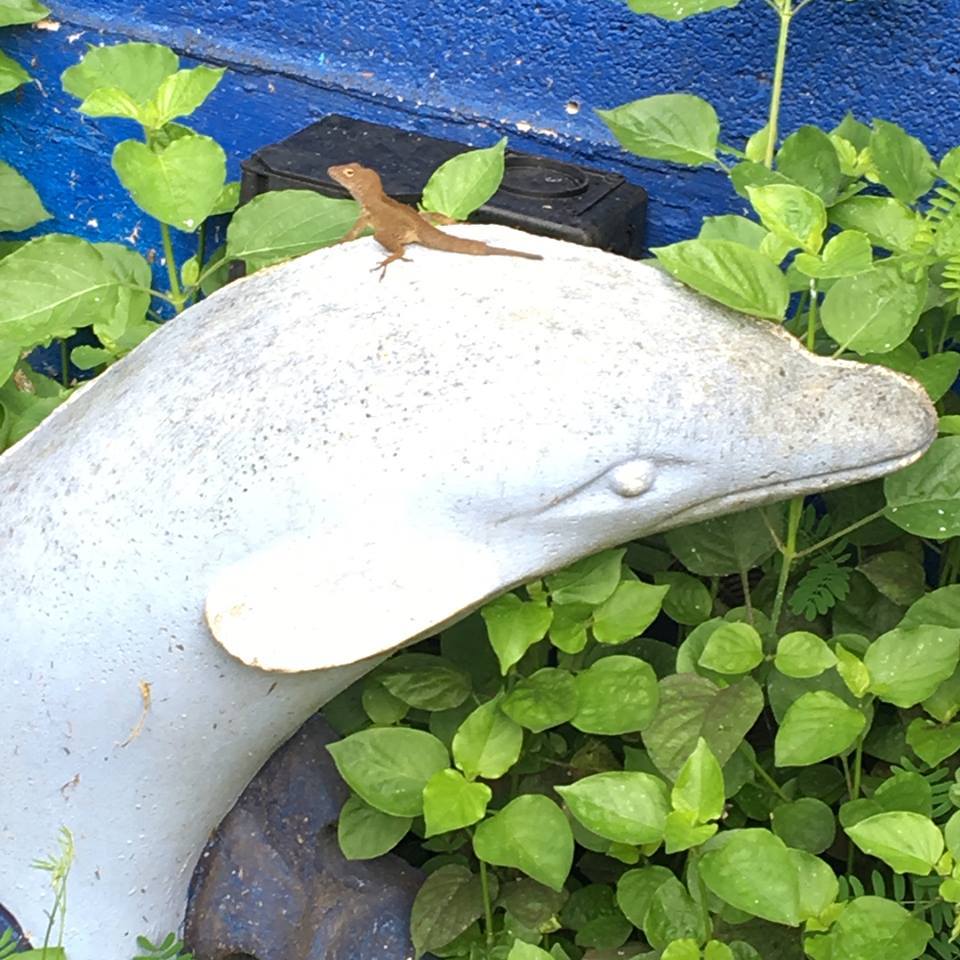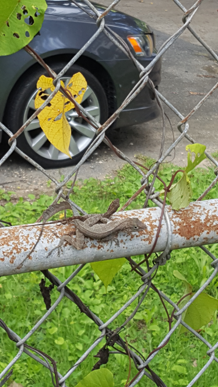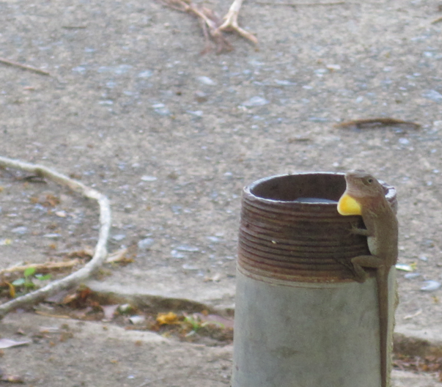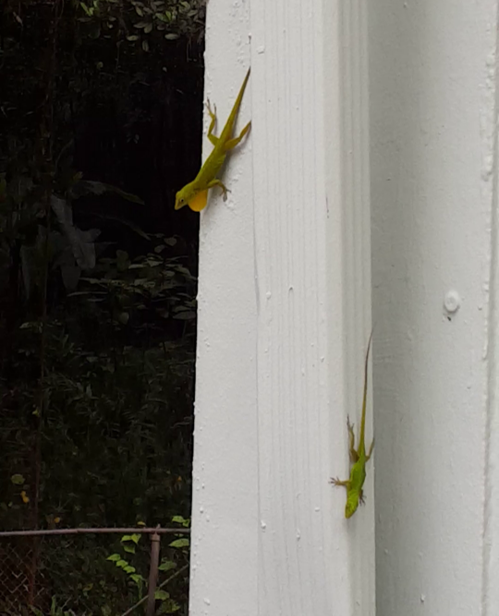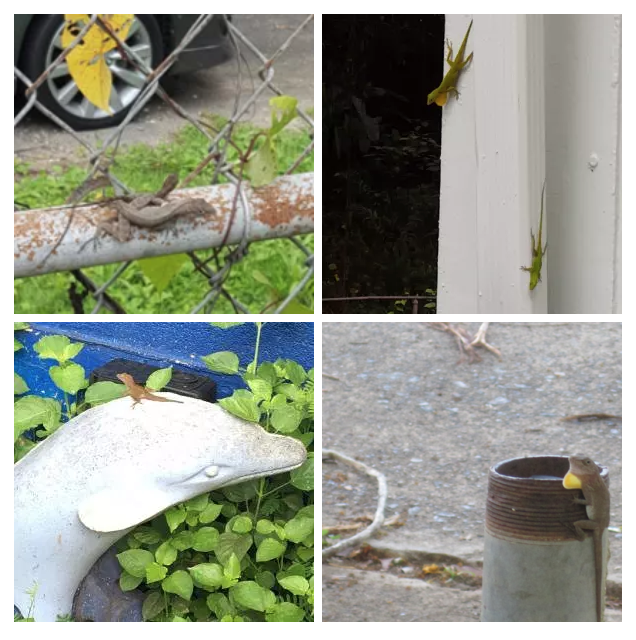Urban areas are easy to find during the night as they quite literally light up. Urban light pollution disrupts biological processes from gene expression to ecosystem composition across multiple taxa, including birds, insects, mammals, and fishes. With ever-increasing urbanization, understanding the effects of artificial light at night (ALAN) on urban organisms is crucial to future... Continue Reading →
Urban Observation of the Week: A Catalogue of Urban Animals in Gamboa, Panama
I've just returned from spending a summer in Panama City, Panama, where I was an intern at the Smithsonian Tropical Research Institute (STRI). Specifically, I worked on University of Nevada Reno Assistant Professor Michael Logan's project, titled The Genomic Basis of Thermal Adaptation: A Large-Scale Transplant Experiment in the Panama Canal. If you're interested, you... Continue Reading →
Los Angeles Lizards: Shifts in Morphology Associated with Urban Living
Ecomorphology describes how an animal’s physical traits (called morphology) match how it uses its habitat. It is assumed that ecomorphology results from performance-morphology relationships across different habitats. For instance, running speed (a measure of performance) could be affected by limb length (a measure of morphology), but this relationship varies based on habitat (e.g. type of... Continue Reading →
Skirting Skinks: Are Lizards Learning to Live Among Humans?
You can't live near humans if you're afraid. Fleeing constantly can be very costly, so generally animals near humans tend to become accustomed to them. A new research compares skinks in Mo'orea island to see if their escape response varies and if skinks living with more humans have adjusted their responses accordingly.
Evolution 2019: Do Anoles Adapt to Urbanization in Similar Ways? Maybe.
A major outstanding question in urban evolution (and evolutionary biology in general) is whether adaptation occurs in similar ways in different populations and across species boundaries. In other words, can the common selective pressures of urban environments lead to convergent adaptation? In my doctoral research, I found that the Puerto Rican crested anole, Anolis cristatellus, adapted... Continue Reading →
Evolution 2019: Urban Lizard Morphology Changes After Hurricane Maria
Kevin Aviles-Rodriguez, a contributor here at LITC, studies urban adaptation and behavior of Anolis lizards. Previously, we told you all about Kevin's research on escape behavior of urban versus forest anoles, which was Kevin's MS research. During his PhD, Kevin has been focusing more on landscape genetics and the morphological impacts of hurricane Maria in urban... Continue Reading →
Evolution 2019: How Do Anoles Handle Artificial Light at Night?
In the second of four urban anole presentations at Evolution, Emmanuel D'Agostino does a great job summarizing new research by LITC contributor Chris Thawley. Chris' post-doc research has really delved into the night-light niche and ALAN, a topic that is no stranger to this blog (check out: It’s Lit in the City, Is Artificial Light Changing Pigeon... Continue Reading →
Evolution 2019: Urban Lizards Have Wider and Longer Toepads
Anole lizards are adapting to urbanization. Anolis cristatellus in particular has rapidly and repeatedly evolved larger toepads with more lamellae (among many other trait shifts) in urban environments across Puerto Rico when compared to nearby forest environments. But one question that has been bugging me and Travis Hagey for years is how exactly are the toepads getting... Continue Reading →
Claws in the City
I’m excited to share an update on my foray into urban ecology and evolution research as an undergraduate! I've been working in the Revell Lab at the University of Massachusetts Boston since my freshman year. I've reported here before about some of my experiences in the field working on urban anoles. Over the past couple of... Continue Reading →
Urban Observation of the Week: Anolis grahami
This week we wish you a Happy Valentine's Day, urban anole style! Here's some photos I took of Anolis grahami in Kingston, Jamaica a couple of weeks ago. Anoles have a colorful throat fan (called a dewlap) that they extend to signal to other males in dominance displays and to females they would like to mate... Continue Reading →
Proc. B Special Issue: Cities as Novel Hybrid Zones for Lizards
This post is part of our series covering the large number of urban evolution manuscripts that were published in August in the special issue "The Evolution of City Life" in the Proceedings of the Royal Society B. Urban environments are often composed of novel communities of native and introduced species. In several cities in Germany,... Continue Reading →
It’s Lit in the City
Night life in the city can be much brighter and artificial lighting can be a significant source of new evolutionary directions for city dwellers. A recent study by Hopkins et al. (2018) researchers reviewed how Artificial Light At Night (ALAN) can drive evolutionary change in a theoretical population. How can artificial light at night (ALAN) drive evolution?... Continue Reading →









